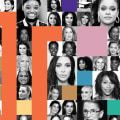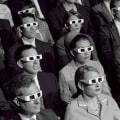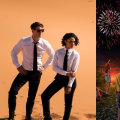The most common forms of popular culture are movies, music, television, video games, sports, entertainment, news, fashion, and various forms of technology. Examples of pop culture can be found in language, art, cinema and, in particular, music. This can include 40 pop music, young adult fiction such as Harry Potter, and fleeting pop culture trends, such as flash mobs and clothing styles. The opposite is the alternative culture or subculture, which is a culture practiced by groups of people but that has not reached the masses.
Occasionally, elements of the subculture break through and briefly become popular culture, such as the rise of pop punk bands in the late 1990s and early 2000s. Boy bands have achieved popularity in waves. An earlier wave of boy bands in the 1960s and 70s saw bands like The Monkeys and The Beach Boys rise in popularity. A central feature of boy bands is that they are given a fun pop image designed to attract a wide audience.
They often have choreographed dance movements and are mainly vocalists. They are usually young teens or boys in their 20s who sing love songs to girls. Rock music rose to prominence in the 1960s and 1970s and has enjoyed significant popular success intermittently ever since. Similar British rock bands such as The Rolling Stones, The Kinks and The Who also achieved worldwide fame in the mid-1960s, and before long this group of artists received the nickname “bands of the British invasion” in the United States.
Every few years, a children's collector's item bursts into the popular spirit of the time. A popular example throughout history are the Pogs, which began as collectible milk tapas in the 1920s. In the 1990s, they were distributed in McDonald's happy meals. Dance styles gain popularity in various cultures at different times.
In the United States, in the 1950s, the swing dance style was very popular. In the 1990s, with the popularity of grunge music, mosh-pits became popular. This was followed by the rise of rave culture and electronic dance music, which also involved a somewhat unstructured leap to music. Flash mobs became a very popular part of Western culture in 2003 and remained prominent for about 3 years.
The spread of punk peaked with the appearance of megabands of pop punk in the 1990s. The epitome of this was the band Green Day. Many older punks used the phrase “pop punk” as a term to mock punk music, which had “sold” to corporate interests in order to enjoy popular fame. The heyday of sitcoms was in the 1990s.
During this era, comedies (“sitcoms”) appeared on television every night and united a nation. The music of the top 40 is one of the most prominent ways in which pop culture can be identified. Each year's top 40 charts are commemorated online to help people reflect on what music captured the spirit of the year. Often, music that is in the top 40 is called “charts” to show that this music is the music of the masses.
A very popular video game series from the 1980s and 1990s was the Mario series. To this day, people dress up as characters from video games such as Mario, Toad and Princess for cosplay events. Pop culture finds its expression in the mass circulation of items from areas such as fashion, music, sports and cinema. The world of pop culture had a particular influence on art since the early 1960s, through pop art.
Folklore provides a very different second source of popular culture. In pre-industrial times, mass culture matched popular culture. This former layer of culture still persists today, sometimes in the form of jokes or jargon, which are spread among the population by word of mouth and through the Internet. By providing a new transmission channel, cyberspace has renewed the strength of this element of popular culture.
There are times when certain elements of popular culture (for example, Turkish carpets, Mexican blankets and Irish fairytales) reach the world of pop culture. The term “popular culture” has different meanings depending on who defines it and the context of use. Companies and advertisers have earned a reputation for spreading popular memes to generate mass consumption of their products and services. Urban culture has not only provided common ground for the masses, but it has also inspired ideals of individualistic aspirations.
Many people say that popular culture is a tool used by the highest-ranking people in a society and elites (who often control the media and popular culture media) use to control people who are below them in society. A different source of popular culture resides in the group of professional communities that provide the public with data about the world, often accompanied by interpretations, usually in the form of vulgarization, i. People who settled into working classes and moved to urban environments far from their traditional agricultural life began to create their own culture to share with their co-workers, as part of the separation from their parents and bosses. Throughout the world (and particularly in Europe), association football (also known as soccer) is the dominant sport in culture.
The presence of social networks means that consumers can speak directly to producers and are themselves producers, which gives a twist to the concept of pop culture. In general, pop culture is more appealing to the masses, while subcultures and countercultures may be more controversial and rebellious. It could be said that sports and television are two of the most consumed examples of popular culture, and they also represent two examples of popular culture with great staying power. The German researcher Ronald Daus has made important contemporary contributions to understanding what popular culture means, which studies the impact of non-European cultures in North America, Asia and especially in Latin America.
In short, popular culture promises stability, while popular culture generally seeks something new or fresh. . .


